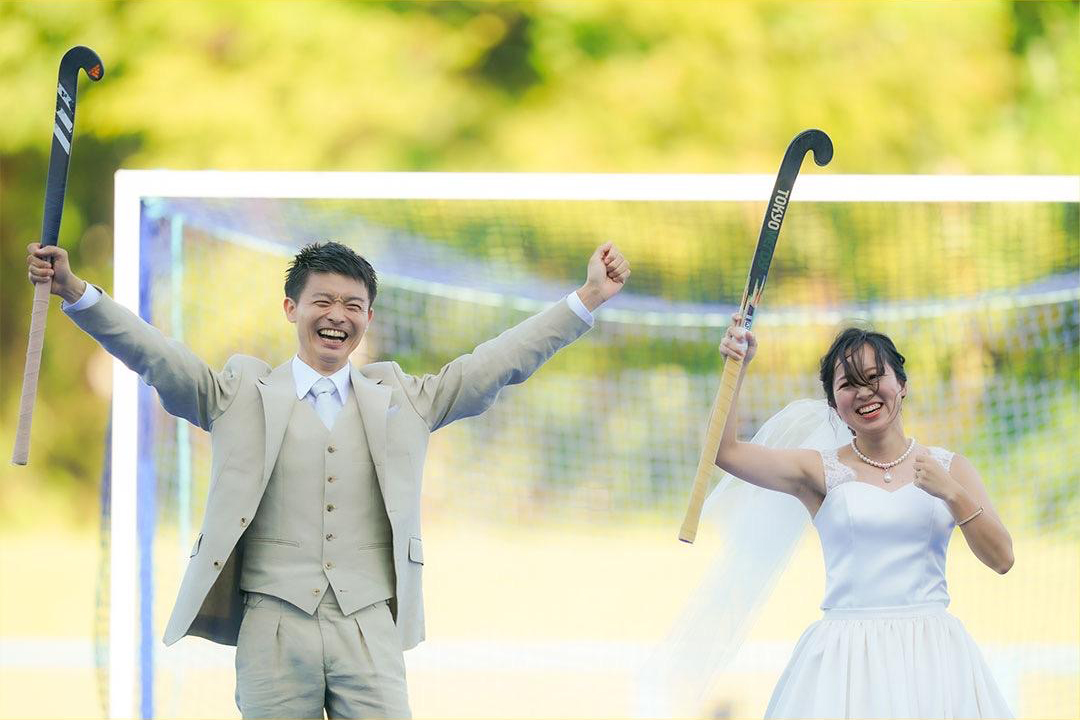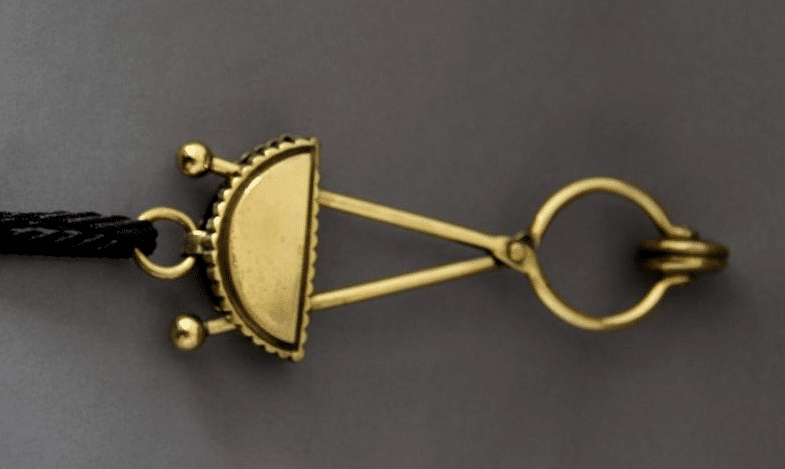The exact date of when these leg-guards were made is a mystery, however research into their style and the dating of their logo suggests their age is close to 100 years old – or at least indicates that they pre-date the Second World War. They may have been the first of their kind during early developments in hockey goalkeeping equipment!
By 1890, hockey teams had begun to consistently use a designated player as a goalkeeper for matches. This triggered the evolution of hockey goalkeeping equipment as players sought to protect themselves from the bruises and knocks they received each week. Cricket provided a great source of inspiration and early hockey goalkeepers would use cricket leg-guards before manufacturing companies began to supply hockey-specific equipment. There was a paralleled development between cricket and hockey protective equipment in the United Kingdom and the Commonwealth where the two sports were national pastimes. The rest of Europe would develop their own distinctive ‘continental’ style for hockey.
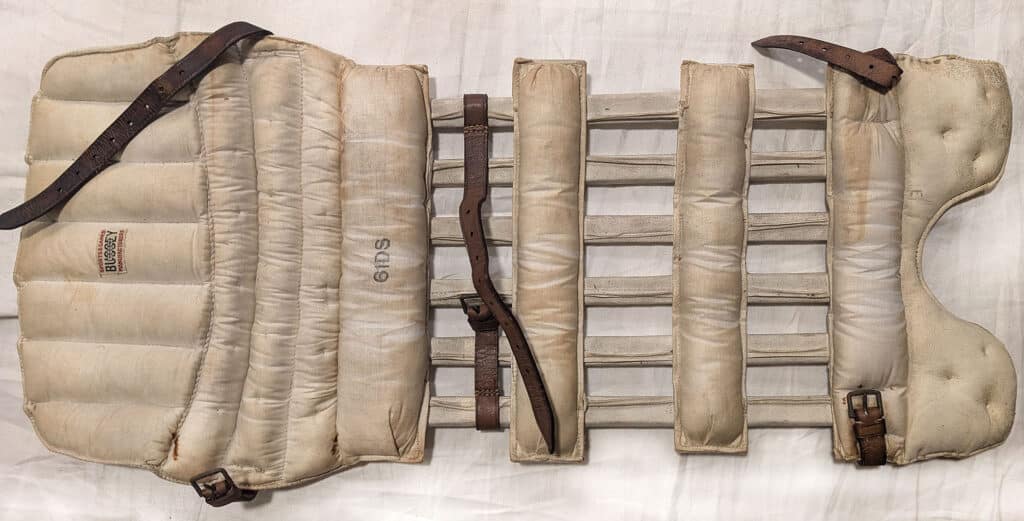
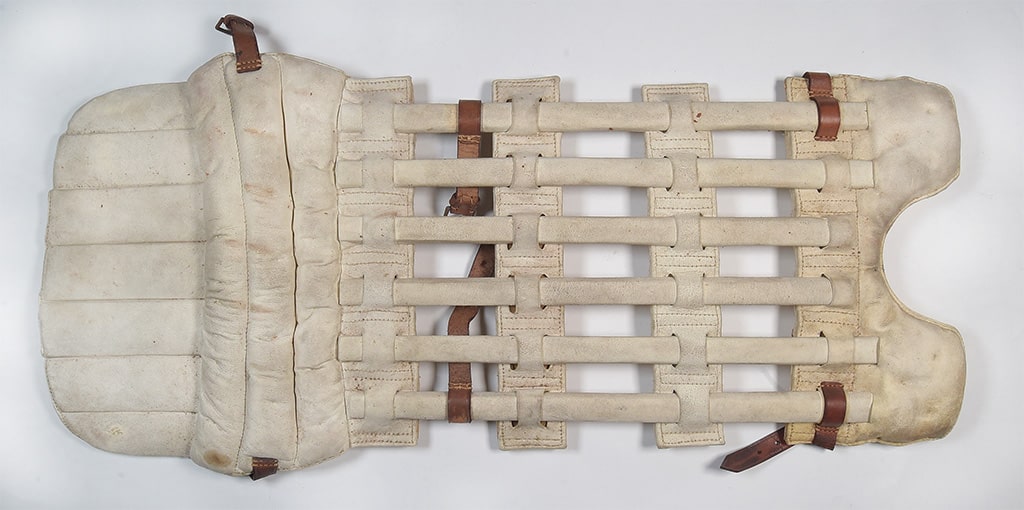
Skeleton leg-guards like this one were a type of leg-guard that differed from the traditional cricket pad style. They were made with hard leather struts which would stop a ball but offered a lightweight alternative to the heavy padding of the cricket pads. This ‘skeleton’ style was also used by cricketers in the early 1900s but there is no exact date of when they were first produced.
Button: You can read more about the history of hockey goalkeeping equipment here: The early era of goalkeeping: a dive into The Hockey Museum’s library – The Hockey Museum
George G Bussey & Co.
The Hockey Museum has recently learnt of George G Bussey & Co., a sporting manufacturer company founded in London in 1884 and the makers of these leg-guards. Their factory was located in Peckham and they produced a variety of athletic equipment. They began patenting new designs and inventions from tennis rackets to hunting rifles and were efficient in adapting to their customers’ opinions. As the company grew in popularity their manufacturing focus expanded to sports like cricket where they became a supplier to famous cricketer W G Grace throughout his career.

In 1895, Bussey’s opened a new store on Queen Victoria Street in London. Their catalogue of sporting supplies changed to focus predominantly on cricket. They recognised cricket as the popular sport of the time and released an advertising campaign featuring new balls and cricket bats in their collection. One of which was the famous ‘Demon Driver’ cricket bat which was first showcased at an exhibition at Crystal Palace in 1897 and praised by W G Grace.
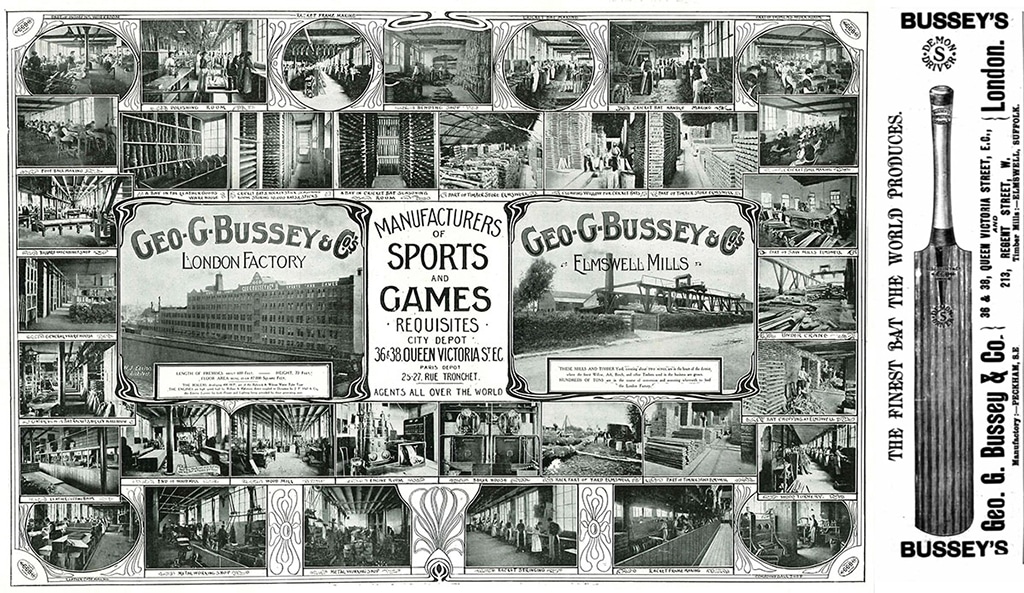
In the 1940s, Bussey’s factory in Peckham became an ammunitions factory for the Second World War and their basement an air raid shelter for London residents. Their regular focus on sporting equipment was temporarily paused like many other manufacturers of the time.
As Bussey & Co. were renowned for producing the next best thing in the sporting world, is it possible these leg-guards may have pioneered the first stages of development in hockey goalkeeping?
We know they post-date 1884 due to the logo branding and it is likely they pre-date the Second World War when the company had to halt production. Bussey’s were known for having an inventive edge and as research shows, they had an active involvement in the production of cricket supplies during the nineteenth and early twentieth century. This leads us to believe that Bussey’s may have been the original designers of this iconic ‘skeleton’ style leg-guard, which would be adopted by hockey goalkeepers in the twentieth century.
If you have any information about the history of the Bussey brand and how they influenced hockey equipment, or if you have some history to share about the development of hockey goalkeeping equipment, please do get in touch via our online contact form.

